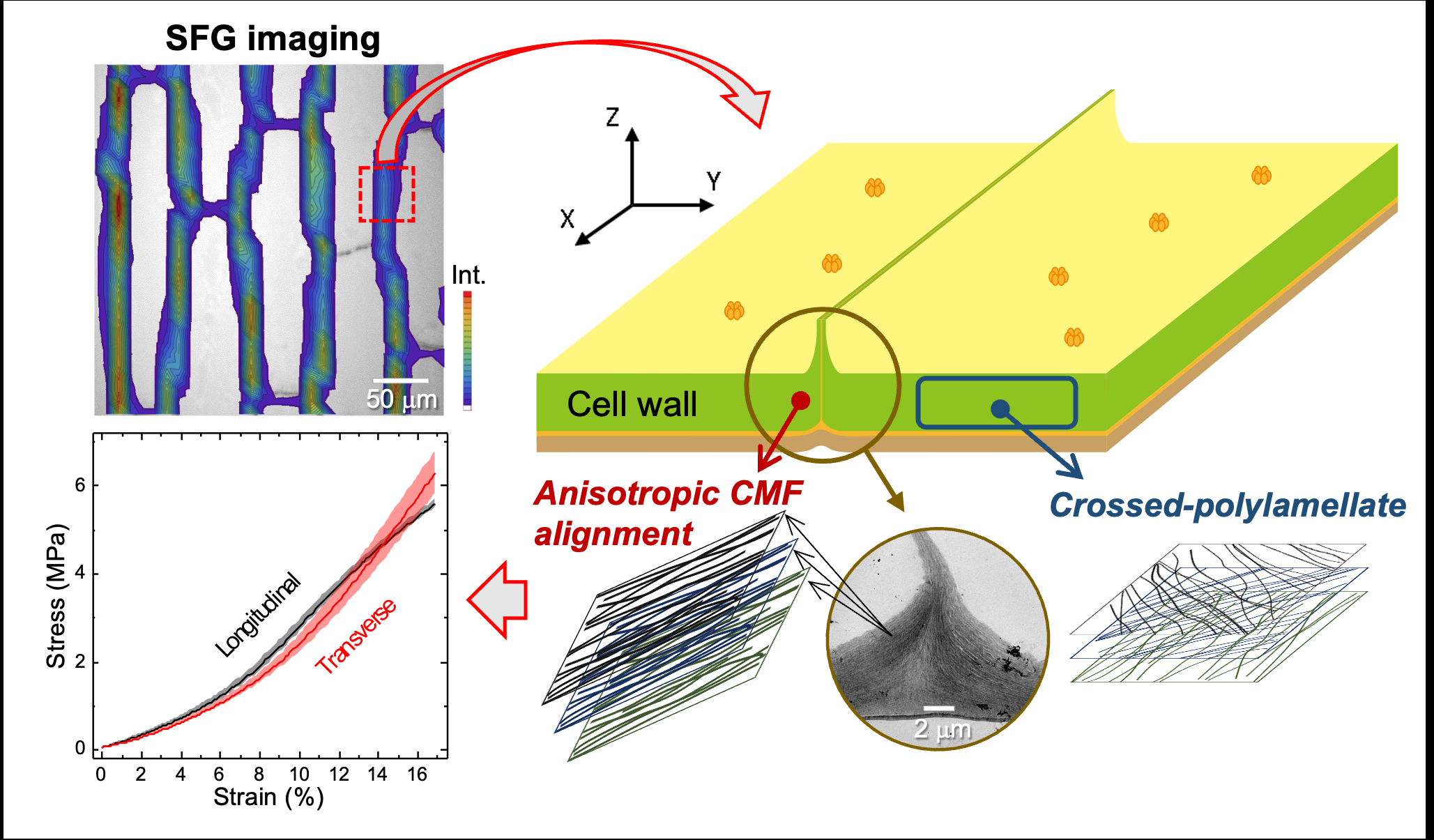Structural inhomogeneity of cellulose assembly in plant cell wall affecting anisotropic mechanical property
Related Products
Quantifying contribution of intra-chain O3H..O5 hydrogen bond to the mechanical properties of crystalline cellulose, chitin, and chitosan
According to the available atomic coordinates of crystalline cellulose and its anhydrous analogs hitherto, the intra-chain hydrogen bond (HB) between the hydroxy group at C3 (O3H) and ring oxygen (O5) of pyranose ring is an inherent structural feature…
Role of dispersion and hydrogen bond interactions for the mechanical properties of plant cellulose
Plants sustain itself with slender stems upright to reach sometimes over 100 meter height…
Role of cellulose in the nonlinear tensile mechanics of plant primary cell walls
The primary cell wall determines many physical aspects of growing plant cells, including size, shape, growth, turgor relations and mechanical strength. Here we took a ‘deep dive’ into the cell wall mechanics of the cross-ply epidermal wall of onion…
Numerical simulation of vibrational sum frequency generation (SFG) intensity for noncentrosymmetric domains interspersed in amorphous matrix: A case study for cellulose in plant cell walls | Poster Board #311
Mesoscale structural assemblies of cellulose microfibrils (CMFs) play a key role in the mechanical properties of plant cell walls. However, due to the structural complexity of plant cell walls which are a mixture of polymeric components, it is challenging to selectively characterize CMF structures…



